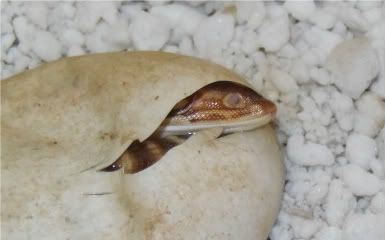Posted by:
FR
at Mon Feb 13 09:48:20 2012 [ Report Abuse ] [ Email Message ] [ Show All Posts by FR ]
Heres the problem Crocdoc, as a scientist, you have forgotten what the word "obligate" means, that is, unless you take it very very loosely.
Its means Lacies are obligated to nest in termite mounds, which means they cannot reproduce without them.
So, how come they have nested in dirt burrows and hollow logs and leaflitter?
We could discuss more scientific principles, like the ability to adapt and change key behaviors of survival, but that indeed would be against sciences current beliefs. If you could prove then Lacies can adapt and change their abilities to nest, then that would be an important paper. Currently, its believed that reptiles can only "do" what they have done. Currently its believed that that type of evolution takes time, not the taking of one individual out of nature and have it adapt to new conditions in captivity. That would show an extreme ability and would be revolutionary.
ALso, many varanid species nest in termite mounds, under certain conditions, they are very useful. But there is no species that is "obligated" to nest in termite mounds.
I have no idea why you think they can only(obligated) nest in termite mounds. Or why its so important to you.
Its already been proven by me and others, they can and do nest in several other ways and very successfully.
I have no doubt that in certain areas, termite mounds were the avenue that allowed lacies to survive. But that is not LACIES as a whole.
Also as a scientist, Lacies have no physical adaption that indicates they are obligated to nest in termite mounds.
Also as a scientist, I would question the need for Lacie eggs to diapause if they had a naturally consistant perfect temp to incubate at, as you say termite mounds have. Yet they do diapause. To diapause is an adaption to survive non suitable conditions, is it not?
Whats interesting is, many many varanid species diapause, with the exception of a few western species such as V.caudolineatus, and V.kingorum. etc. Whats of interest is, in captivity, we had lacie eggs diapause and not diapause. That is, had eggs from one clutch hatch very quickly, while others took an extremely long period of time(1 year 7 weeks) All that indicates is, they, the eggs, have the ability to survive hatch under very different conditions. Which also indicates they are not "obligated" to a consistant hatching enviornment. AS mentioned, we did have lacie eggs that were laid outside, overwinter under extremely variable conditions.
Lastly your "Termite mound" focus is a bit, off topic to this forum, the keeping and breeding of varanids(in captivity) as lacies have successfully nested without termite mounds. In fact, you do not nest them in termite mounds, you use a wooden box, that contains no termites. Consider, a termite mound is no longer a termite mound if there is no termites.
Your arguement about their ability to nest in a some place, was never argued, we nested them in hollow logs long before you ever kept lacies. There was never a discussion that lacies required long burrows.
Also many others have successfully nested lacies in captivity, in a varity of conditions that are not termite mounds.
We could discuss(argue) which method is better, or better under Certain conditions, but that discussion would not include the word "obligate".
Thank you and best wishes
This is hatching now,

[ Reply To This Message ] [ Subscribe to this Thread ] [ Show Entire Thread ]
|





